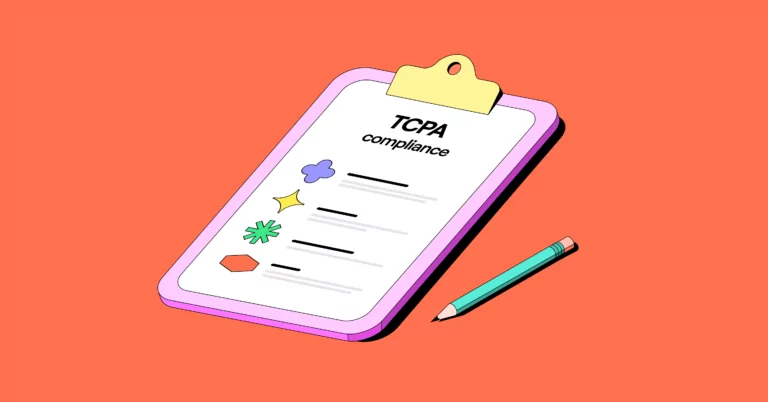Looking to become TCPA compliant with your text messaging and calling?
This guide covers everything you need to know about TCPA regulations for businesses.
After we explain what the TCPA is and how violations could impact your business, we provide a nine-step TCPA compliance checklist that you can jump to here.
If you need a way to manage TCPA guidelines at scale, we also introduce a modern business communication platform that can help with compliance as you grow.
What is the TCPA?
The TCPA stands for the Telephone Consumer Protection Act, which was a law passed by the Federal Communications Commission (FCC) to protect Americans from predatory telemarketing calls. Although its initial purpose was to stop unsolicited calls from reaching consumers, the modern TCPA applies to almost all forms of business communication, including:
- Faxes
- Voicemails
- Autodialed calls
- SMS marketing campaigns
- Prerecorded voice messages (robocalls)
TCPA guidelines are more than just suggestions — they’re necessities for any business working in or calling to the US. If you fail to uphold the TCPA’s guidelines, you may rack up class action lawsuits and thousands of dollars in fines.
To summarize: following TCPA guidelines is a necessity, not a luxury. And if you want to avoid expensive TCPA violations, you need to uphold the TCPA guidelines listed below.
The TCPA’s guidelines for businesses
The TCPA requires your business to follow nine specific guidelines to contact customers in the US. These include:
- Getting prior express written consent from recipients
- Knowing when implied consent applies
- Communicating the terms and conditions of your calls and texts
- Calling and texting recipients during business hours only
- Writing your business name in the first text message
- Allowing people to opt out of messages and respecting their wishes
- Respecting the National Do Not Call List (National DNC Registry)
- Honoring opt-out requests for phone calls and texts
- Training team members in proper TCPA compliance guidelines
Let’s take a look at these requirements in greater detail.
TCPA compliance checklist: Rules and best practices to follow
Violating the TCPA could put your business at risk for fines, lawsuits, and, worst of all, a bad reputation.
Thankfully, we’ve created a checklist of nine essential rules so you can legally make calls and texts to the US.
Here are the rules and best practices your business must follow to comply with TCPA guidelines, starting with the most important:
1. Obtain express written consent
Before your business calls or texts customers, you need a record of their ‘prior express written consent.’ This means you need a record of oral or written documentation showing customers willingly provided their contact information and requested communication from your business.
You can keep records of prior written consent in two forms: physical or digital. Digital records are much easier to store and retrieve, although you can always store physical documents as an extra layer of defense against disputes.
How can you obtain express written consent for texting and calling? You need a few things:
- You can list consent disclaimers underneath marketing messages, lead magnets, and other interactive forms. Just keep in mind that you can’t require customers to opt in to marketing to be able to purchase goods or services — you can only include the disclaimer and ask if customers would like to receive notifications. You should also get written consent for any sort of marketing communication.

- Your consent form needs to explain the kind of message(s) your customers can expect. For example, do you intend to send messages for commercial purposes, or informational purposes? How often do you plan to send texts or make calls? You should also list your privacy policy and terms and conditions so customers can read the fine print (more on this later).
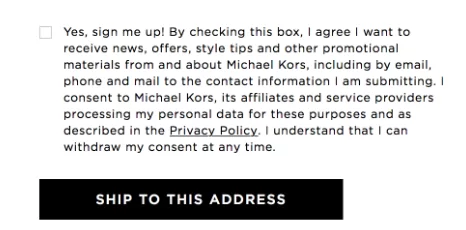
- If you plan to send promotional messages to customers, you may want to implement a double opt-in strategy. Although the TCPA doesn’t require this, the Cellular Telecommunications Industry Association (CTIA) does. If you violate the guidelines of the CTIA, you may get reported to carriers and lose access to customers on major networks like Verizon, T-Mobile, and AT&T.
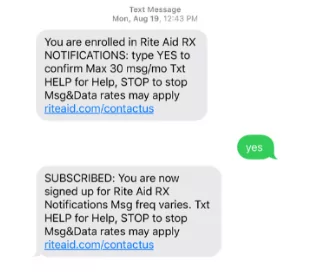
You need to follow each of these rules before contacting customers by phone or text. However, if you already have an existing relationship with a customer, you may be able to send conversational text messages just with implied consent.
Let’s take a closer look.
2. Understand when implied consent applies
Not every customer is a brand-new contact for your business — and some may want to call or text you first while looking for more information. This is what the TCPA refers to as ‘implied consent’: customers who have a preexisting relationship with your business and don’t need express written consent.
But what actually counts as a preexisting relationship? Anything that causes a customer to willingly provide their phone number to you. This includes:
- Messaging or calling you first
- Being a present or past customer who hasn’t opted out of calls or texts
As long as a customer initiates the conversation, you have enough implied consent to message or call them back — as long as your responses are relevant to the conversation, of course.
Keep in mind there are some exceptions even to implied consent. You may not have to get consent at all for certain types of messages. For example:
- Healthcare organizations can send lab results or post-op care guides
- Financial businesses can send security or account updates
- Utilities can send outage information or maintenance details
- Tax-exempt nonprofits are excluded from TCPA guidelines (but still have to respect the National Do Not Call Registry)
To summarize: you can generally make phone calls and texts for emergency purposes outside the TCPA’s usual guidelines for consent. Still, the CTIA suggests you gain consent from customers beforehand so you can handle legal disputes with less stress.
As always, don’t forget to neglect basic business phone etiquette.
3. Communicate terms and conditions clearly
Customers need to know what they can expect before they opt into calls or texts. This means you need to provide as many details as possible so they can make an informed decision before handing over their info.
To stay TCPA compliant, you must:
- Disclose your privacy policy and terms and conditions in places customers can access them
- Mention your business at the first point of contact (this applies to both calls and texts)
- Explain how often you intend to call or text, as well as how many messages you plan to send per month
Some businesses also disclose data rates inside a link in their text messages so customers can get more help and information.
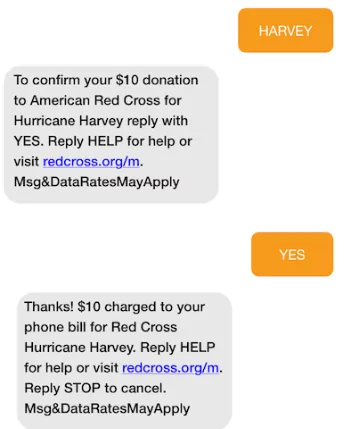
4. Always provide a way to opt-out
Your contacts always need a way to opt out of calls and texts — even if they just opted in yesterday. The TCPA says customers can give and take away consent at any time, and not providing a way to do so could put you into a tricky legal situation.
Both the TCPA and CTIA have guidelines for opt-out messages. For texting, these include:
- Sending instructions for how to opt -out at least once per month
- Having a HELP shortcode (or something similar) so customers can request more information for your business
For calling, you need to:
- Honor any verbal requests to be removed from your list
- Check the DNC registry (more on this later)
For more information, feel free to explore our comprehensive guide to TCPA opt-in / opt-out requirements.
5. Communicate during business hours only
You don’t want to get a business call in the middle of the night, do you? Neither do your customers. That’s why the TCPA requires businesses to send messages during ‘business hours’ only — which means 8 AM to 9 PM in your customer’s local time.
With OpenPhone, you can send scheduled SMS messages based on any time zone from your phone, laptop, or tablet. All you have to do is type your message, hit the clock icon, then queue up your text.
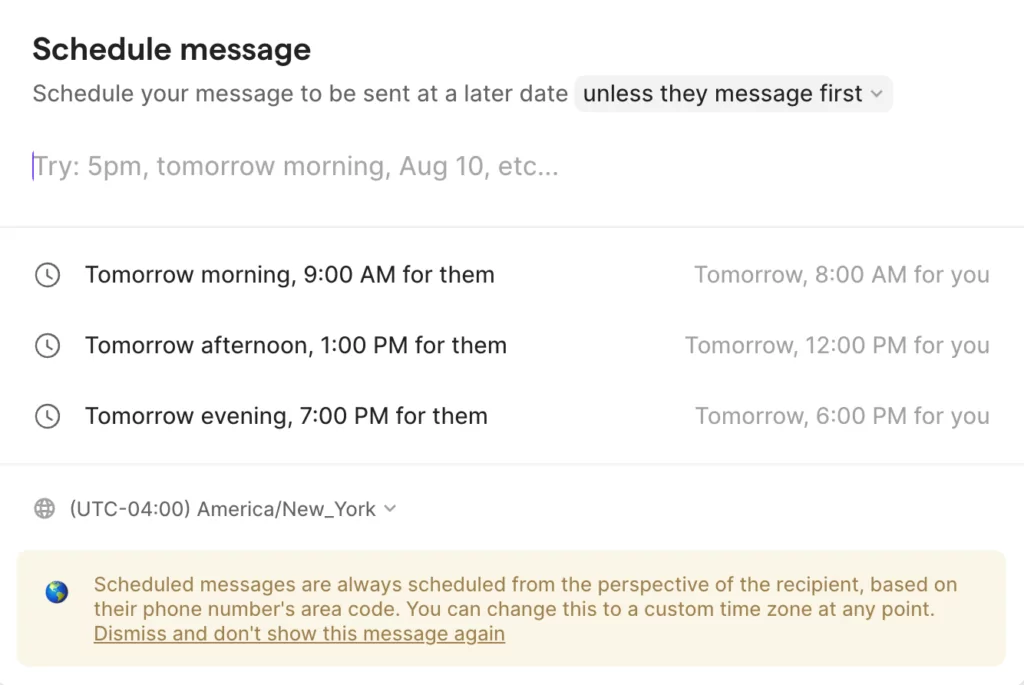
Struggling to figure out the best time to call your customers? You can also use scheduled messages to compare your time zone to your customers’ time zone. This means you can rest easy knowing you’re TCPA compliant without having to worry about pulling up other tools.
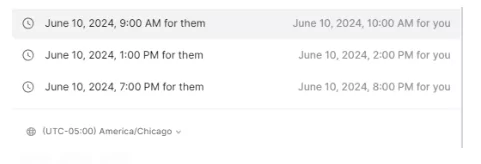
6. Include your business name in the first text message
Whether you’re on the phone or simply texting with customers, you need to disclose your business name (and possibly your name) the first time you contact them. Not only does this reduce any confusion for customers, but it clearly states your intentions and helps recipients understand who you are.
You can try saying something along these lines:
- Hey [name], this is [your name] from [business]. I received your appointment request this morning and wanted to confirm the time still works for you.
- [Name], thank you for your interest in [business] messages. By opting in, you’re consenting to four text messages per month. Reply IN to opt in. Reply HELP for more information.
- Thanks for [calling/texting] [business name]! I’d love to help you [action]. Can you give me a few more details so we can get started?
Keep in mind you may not need to provide your name or business name in follow-up messages through text. However, if it’s been weeks since your last conversation with a customer, you may want to reintroduce yourself, just in case.
You should always open with your name and business name while on the phone with customers.
If you want some additional templates for inspiration, we’ve compiled a list of business text message examples you can start using today.
7. Respect the National Do Not Call Registry and avoid cold- calling lists
Nobody likes unwanted calls and texts, although Americans receive millions of them per year. That’s one of the reasons why the US government founded the National Do Not Call Registry (DNC) in 2003 — to stop marketers and predatory call centers from spammingbothering people’s landline or cell phone numbers.
If a contact has their number listed on the DNC, you cannot contact them at all. The best way to check this is to create an account to access the DNC registry and scrub any numbers matching the ones on your list. You can also check up to three numbers on a tool offered by the Federal Trade Commission (FTC); keep in mind it’s intended for consumer use rather than business purposes.
You can rely on an automatic telephone dialing system (or ATDS) to avoid calling customers on the DNC list. However, be prepared for potentially heavy fines: the Federal Communications Commission (FCC) has several restrictions on automatic dialers, and if you use one to manage cold calling, it could lead to legal action.
Even beyond the legal ramifications, you should know cold calling (or texting) isn’t the most efficient way to drum up business and not supported by some providers like OpenPhone.
Not only can cold communication reflect badly on your reputation, but it leads to carriers labeling your phone number as spam to their customers. In the worst-case scenario, your phone provider may ban you from their network, losing you thousands of contacts.
Building up your inbound marketing process is a far more effective way to build better relationships with your customers. Here’s what we did at OpenPhone to grow online search traffic from 500 to 30,000 monthly visits:
- Create blog content people are actually searching for online
- Perform basic keyword research to create a content strategy
- Optimize existing content to freshen up posts with additional value
Want to learn more about how you can use OpenPhone to cultivate stronger customer relationships? You’re welcome to take our platform on a test drive with our seven-day free trial.
8. Do not send unsolicited communications to people who have opted out
If a customer asks you to stop calling or texting them, you need to honor their request immediately. Sending additional messages could rack up huge fines and tarnish the reputation of your brand.You need to keep an internal do not call registry so you can immediately tell who’s opted out of your business communications.
With OpenPhone, we automatically let contacts know after they opt out of receiving texts from your phone number by sending the below text so you can stay compliant:
You have successfully been unsubscribed. You will not receive any more messages from this number. Reply START to resubscribe.
9. Train teammates on TCPA compliance
The TCPA may not change every few years, but the people who staff your business do — and probably aren’t as familiar with TCPA guidelines as you are.
That’s why the TCPA requires businesses to have detailed descriptions of call procedures so violations don’t happen by accident.
It’s also a good idea to provide yearly training to keep team members up to speed, as well as onboarding documents for new trainees so nobody gets left out of the loop.
Managing TCPA compliance at scale

TCPA compliance can get more and more complicated as your business scales. Keeping an eye on guidelines can be tedious and prone to errors — which is where OpenPhone comes into play.
OpenPhone is a business phone solution designed to help you manage TCPA compliance across multiple communication channels. We make it easy to send compliant texts and calls while automating repetitive tasks so you can grow your business without violating legal requirements.
With OpenPhone, you can:
- Register your telephone number for A2P 10DLC and STIR/SHAKEN
- Queue up scheduled messages so you always text customers during business hours
- Send automatic opt-out texts to let customers know they’ve successfully unsubscribed
When you’re ready to get started with TCPA-compliant calling and texting, you can sign up with OpenPhone to test our platform with your team. Then, when you’re ready, you can port over your existing number(s) (local US, Canadian, or North American toll-free numbers) to make TCPA-compliant phone calls and text messages at scale.
